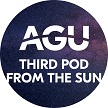Centennial E10 – Volcano Disaster Prepping

John Ewert installs a platform tiltmeter, high on the east side of the lava dome that formed the peak of Pinatubo, on the hot afternoon of 31 May 1991, at a site later obliterated by the formation of the caldera after the major eruption in June. Credit: Andy Lockhart.
Many people have emergency kits packed to flee or survive forces of nature like floods, hurricanes, or wildfire. But what do you throw in your bag when you expect to rush toward a natural hazard? Geologist John Ewert has his go-kit packed with portable seismometers and gas-monitoring equipment, ready to mobilize when a volcano starts to rumble.
Ewert started his career at the U.S. Geological Survey’s Cascades Volcano Observatory in Vancouver, Washington in 1980, months after the explosive eruption of Mount St. Helens. He has encountered a wide variety of volcanoes and volcanic personalities as a member of USGS’ Volcano Disaster Assistance Program (VDAP), formed in 1986 to deploy scientists and equipment to awakening volcanoes around the world at the request of local science agencies or governments.
The program faced its first big challenge in 1991, at a previously unknown volcano in the Philippines called Pinatubo. The VDAP team and Philippine volcanologists scrambled to get equipment on the mountain and analyze data. But science was only half the job. Earning the trust of people living near the volcano was as big a task. Ultimately, Ewert and his colleagues successfully persuaded the U.S. Air Force, Philippine government and local indigenous people to evacuate over 60,000 people—more than 20,000 from what proved to be the path of certain death after the volcano’s major eruption on June 15.
In this Centennial episode of Third Pod, Ewert talks about driving away from Pinatubo in the “scary dark” of ashfall, creeping along in a crowd of hundreds of thousands of evacuees and using orange soda to clear the windshield when the wiper fluid dried up. He explains how every eruption occurs in a social and political context, how communication failure allowed the deaths of 25,000 people living below the volcano Nevada del Ruiz in Columbia, and how that tragedy galvanized volcanologists worldwide.
This episode was produced by Liza Lester and mixed by Robin Murray and John Shriner.



